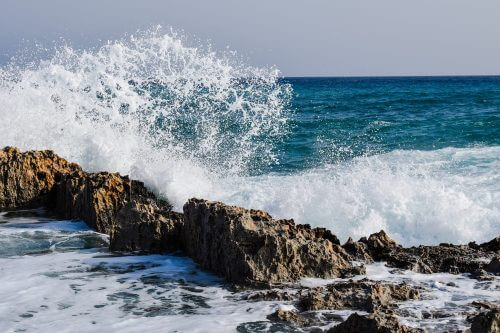According to a new model developed by Weizmann Institute scientists, the ancient oceans were more acidic compared to today - yet life was possible in them

Many people today talk about the increase in the level of acidity of the sea water and the dangers associated with it, but was there a time in the history of the earth when the sea was more acidic? Dr. Itai Halevi from the Weizmann Institute of Science looked far into the early history of the oceans in order to understand how the acidity of seawater can change in response to a higher concentration of carbon dioxide in the atmosphere. According to a model developed by Dr. Halevi - in collaboration with Dr. Aviv Bahan from Stanford University - at the time when life began on Earth, the oceans were slightly acidic, and only gradually became more basic; the study Recently published in the scientific journal Science.
"Billions of years ago the sun was weaker, although there is no evidence that a much colder climate prevailed than today. We attribute this to the fact that at that time there were higher levels of the greenhouse gas carbon dioxide in the atmosphere than today - and as the sun grew stronger, the carbon dioxide decreased," Dr. Halevi from the Department of Earth and Planetary Sciences explains the conditions that affected the acidity level of The ancient oceans.
The level of acidity or alkalinity is measured on a pH scale that accepts values of 0-14; According to this scale, the value 7 reflects neutral acidity, with lower values being acidic, and higher values being basic. At 8.2, the oceans today are at a slightly basic level. However, some warn that carbon dioxide emissions are currently changing the picture and increasing the acidity level of the sea water (that is, lowering the pH).
Carbon dioxide and water produce carbonic acid, so it can be estimated that the ancient oceans were more acidic compared to today - due to higher levels of carbon dioxide in the atmosphere at that time. On the other hand, high levels of carbon dioxide also produce acid rain, which could have caused chemical weathering of the earth's rocky crust - thus washing into the sea ions that could have balanced the acidity of the carbon dioxide. But it is not clear which effect is stronger, so previous models of the history of seawater acidity have produced conflicting findings.
"But what does all this tell us about the situation today? Carbon dioxide emissions as a result of the use of fuel and coal are much faster, and the oceans - and the creatures living in them - may not adapt so quickly to these changes"
The model developed by Halevi and Bahan takes into account these different processes and the way in which they affect ion fluxes to and from the sea. "Basically, we show in the research that the acidity level of the sea is controlled throughout geological history by a few simple processes," explains Dr. Bahan. According to this model, the acidification effect resulting from high levels of carbon dioxide was more dominant, so the model predicts that the ancient oceans had a lower pH level than today. How much lower? According to Dr. Halevi, 3-4 billion years ago, the pH level of the ocean was between 6.0 and 7.5 - something between cow's milk and human blood. "These findings give us some clues about the conditions under which life developed in the ancient oceans," adds Dr. Halevi.
"Apparently, there were more acidic sea waters here than they are today, and under these conditions primitive life forms thrived and chemical cycles balanced out," says Dr. Halevi. "But what does all this tell us about the situation today? We must remember that the balance between acids and bases is maintained over geological times of millions of years. Carbon dioxide emissions today as a result of the use of fuel and coal are much faster, and the oceans - and the creatures living in them - may not adapt so quickly to these changes. It is true that in a few hundred thousand years the oceans will return to balance, but until then we think that the effect of an increase in carbon dioxide levels and the acidification of sea water will harm the marine creatures and the marine environment as a whole. The question is to what extent."
